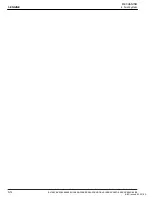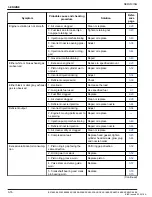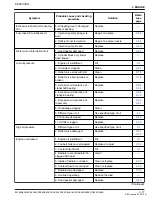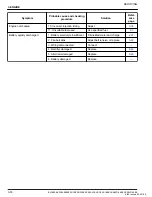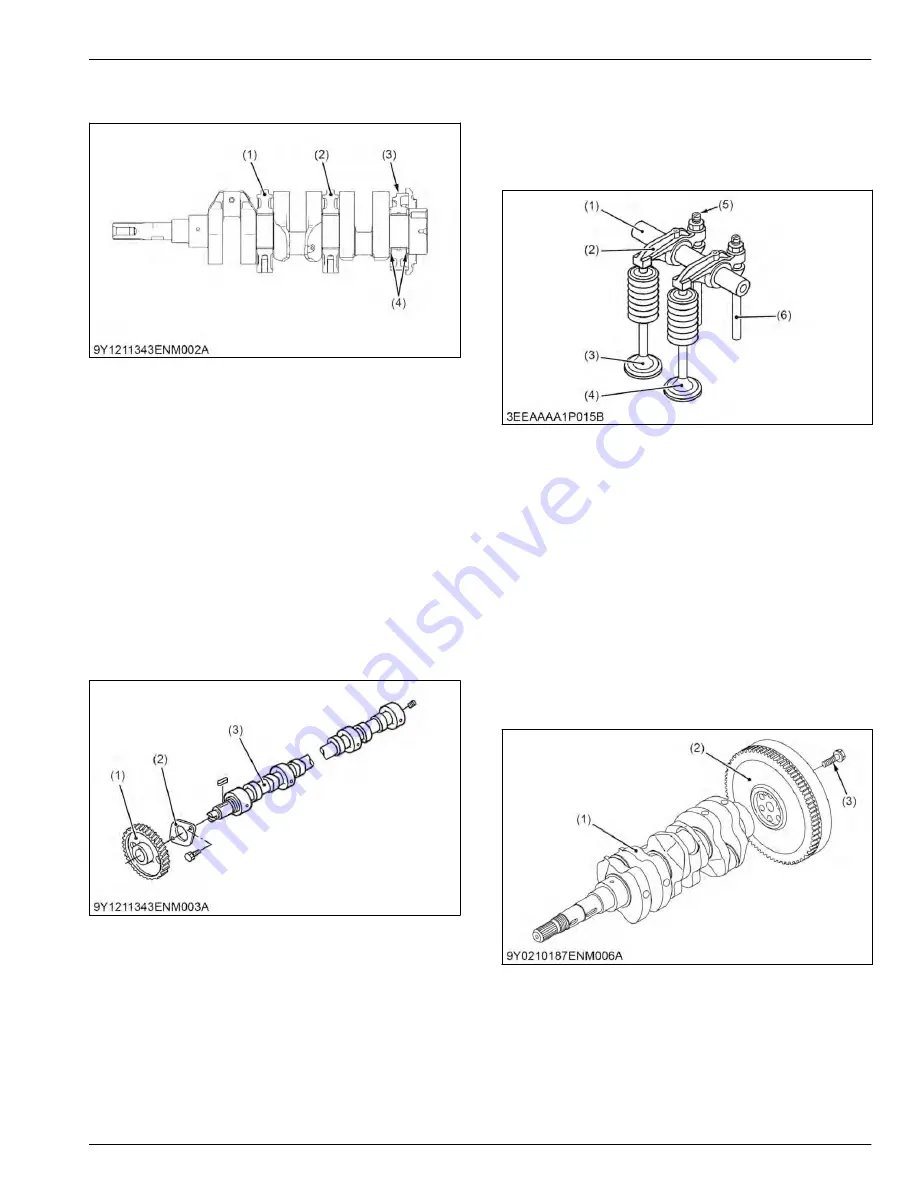
of all the pistons into one rotary force that drives the
machine.
(1) Front split type bearing
(2) Intermediate split type bear-
ing
(3) Rear split type bearing
(4) Thrust bearings
The crankshaft is made of tough special alloy steel, and
the journals, pins and oil seal sliding portions are
induction hardened to increase the hardness for higher
wear resistance. The front journal is supported by a
split type (1) and the intermediate journal by a split type
(2), and the rear journal by a split type (3) with thrust
bearings (4). The crankshaft is provided with an oil
gallery, through which engine oil is fed to the crankpin
portion, and lubricates it.
1.8 Function of camshaft
The camshaft controls the opening and closing of the
intake and exhaust valves in the cylinder head.
(1) Cam gear
(2) Camshaft stopper
(3) Camshaft
The camshaft (3) is normally driven by gearing from the
crankshaft. This is made of special cast iron, and the
journal and cam sections are chilled to resist wear. One
intake and one exhaust cam is provided for each
cylinder. The journal diameters are large to permit
removal of the shaft from its bore. The journal sections
are force lubricated.
1.9 Function of rocker arm
The rocker arm is an oscillating lever that conveys
radial movement from the camshaft lobes into linear
movement at the exhaust and intake valves to open
and close them.
(1) Rocker arm shaft
(2) Rocker arm
(3) Exhaust valve
(4) Intake valve
(5) Adjusting screw
(6) Push rod
The rocker arms (2) are mounted on a rocker arm shaft
(a single hollow shaft) (1) at the top of the engine.
When the push rods (6) move up, the mating rocker
arm is moved down, contacting its valve stem tip and
opening the valve. Lubricating oil pressurized through
the rocker arm bracket to the rocker arm shaft, which
serves as a fulcrum so that the rocker arm and the
entire system are lubricated sufficiently.
1.10 Function of flywheel
A flywheel is a rotating mechanical device that is used
to store rotational energy.
(1) Crankshaft
(2) Flywheel
(3) Flywheel screw
The flywheel (2) is generally made of heavy cast iron or
steel and has gear teeth around its outer rim, which
mesh with the drive pinion of starter. The flywheel
stores the rotating force in the combustion stroke as
inertial energy, reduces crankshaft rotating speed
fluctuation and keeps the smooth rotating conditions.
MECHANISM
1. Engine body
3. ENGINE
BX1880,BX2380,BX2680,RCK60B-23BX,RCK54-23BX,RCK48-18BX,RCK60D-26BX,RCK54D-26BX
3-3
KiSC issued 03, 2019 A
Summary of Contents for ,RCK60B-23BX
Page 19: ...1 INFORMATION KiSC issued 03 2019 A ...
Page 42: ...2 GENERAL KiSC issued 03 2019 A ...
Page 111: ...3 ENGINE KiSC issued 03 2019 A ...
Page 190: ...4 TRANSAXLE KiSC issued 03 2019 A ...
Page 255: ...5 FRONT AXLE KiSC issued 03 2019 A ...
Page 274: ...6 STEERING KiSC issued 03 2019 A ...
Page 291: ...7 HYDRAULIC SYSTEM KiSC issued 03 2019 A ...
Page 344: ...8 ELECTRICAL SYSTEM KiSC issued 03 2019 A ...
Page 399: ...9 MOWER KiSC issued 03 2019 A ...


























